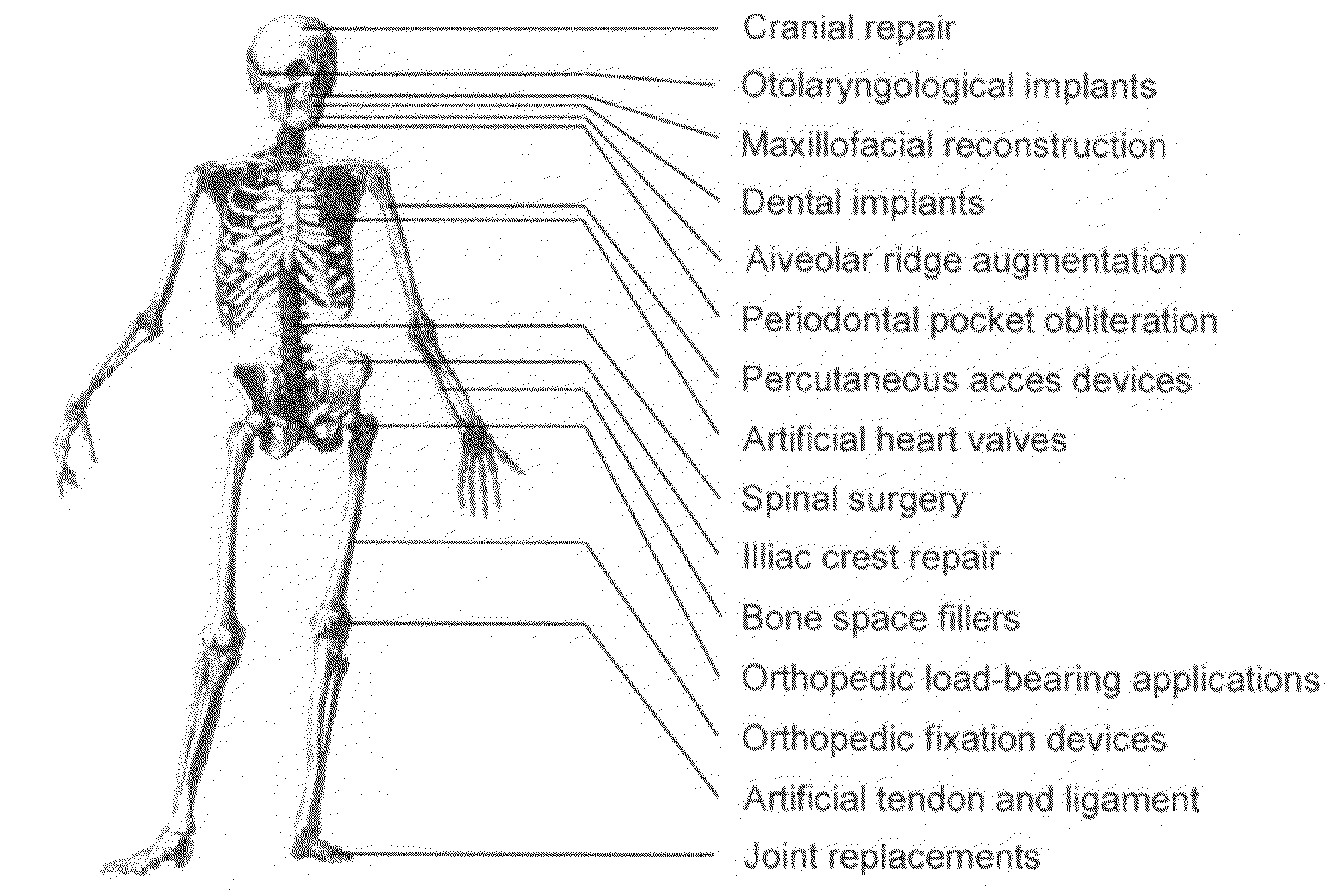Bioactive graded zirconia-based structures
a zirconia-based, bioactive technology, applied in the field of dental and orthopedic implants, can solve the problems of low bioactive ceramics, low bioactive ceramics, and inability to realize the full potential of ceramics in biomedical applications,
- Summary
- Abstract
- Description
- Claims
- Application Information
AI Technical Summary
Benefits of technology
Problems solved by technology
Method used
Image
Examples
example 1
Materials and Methods
[0040]A bioactive graded CPG / Y-TZP material will be fabricated using a glass-ceramic infiltration technique. We use the CPG compositions developed by Dr. Racquel LeGeros and coworkers at the New York University, which consist of the following contents: CaO, CaF2, P2O5, MgO and ZnO. (LeGeros, Journal of Materials Science 2004, 39(16-17):5577-5579). The typical CTE value of the bioactive CPGs ranges from 70 to 140×10−7 in / in / ° C., depending on its composition. Therefore, it is possible to develop CPG compositions with CTE values similar to zirconia or alumina or zirconia-alumina composites. Theoretical calculation based on glass expansion factors indicates that a Ca / P ratio between 0.6 and 1.0 are likely to exhibit a desirable CTE value. The selected CPG compositions will be melted at temperatures of approximately 800-1250° C. (depending on the Ca / P ratios) and quenched to room temperature. The as-quenched CPG samples will be attrition milled to reduce the particl...
example 2
Materials and Methods
[0041]A bioactive graded CPG / Y-TZP material may be made using a solution-precipitation method followed by a glass-ceramic infiltration technique. Cylindrical Y-TZP green compacts (approximately 7 mm in diameter and approximately 35 mm long), fabricated from a fine-grain yttria-stabilized zirconia powder (TZ-3Y-E, Tosoh, Japan), will be presintered at temperatures between 900 and 1400° C., creating Y-TZP rods with various porosities. Partially sintered zirconia rods will be immersed in solutions containing Ca, P, optionally one or more other ions such as Mg, Zn, K, optionally F, and optionally Zr. Precipitation of CPG-based composition to the accessible surface of presintered Y-TZP rods will be performed at room temperature or in a conventional oven at 60° C. or 200° C. for various durations. In addition, microwave heating will be used to facilitate the precipitation process. Infiltration of the CPG-based composition into the Y-TZP and densification of the presin...
example 3
Materials and Methods
[0042]A bioactive graded CPG / Y-TZP material may be made using a glass-ceramic infiltration technique of a dense Y-TZP. Dense Y-TZP will be either coated with a powdered CPG-based slurry or deposited with a CPG-based composition using techniques, glass compositions, and precipitation conditions described in Examples 1 and 2. The CTE of the bioactive glass composition is substantially the same as the CTE of the substrate material (i.e. Y-TZP or Ce-TZP or Mg-PSZ or Ca-PSZ or alumina or zirconia-alumina composites). Infiltrating the CPG-based composition into the dense Y-TZP substrate will be performed in one or more firing cycles at a temperature of from about 750° C. to 1000° C. The dense ceramic substrate may be Y-TZP, Ce-TZP, Mg-PSZ or Ca-PSZ or alumina or zirconia-alumina composites. The CTE of the bioactive glass composition will be selected to match that of the substrate material. The infiltration temperatures / time and the heating / cooling rates will be altere...
PUM
| Property | Measurement | Unit |
|---|---|---|
| temperature | aaaaa | aaaaa |
| temperature | aaaaa | aaaaa |
| temperatures | aaaaa | aaaaa |
Abstract
Description
Claims
Application Information
 Login to View More
Login to View More - R&D
- Intellectual Property
- Life Sciences
- Materials
- Tech Scout
- Unparalleled Data Quality
- Higher Quality Content
- 60% Fewer Hallucinations
Browse by: Latest US Patents, China's latest patents, Technical Efficacy Thesaurus, Application Domain, Technology Topic, Popular Technical Reports.
© 2025 PatSnap. All rights reserved.Legal|Privacy policy|Modern Slavery Act Transparency Statement|Sitemap|About US| Contact US: help@patsnap.com



